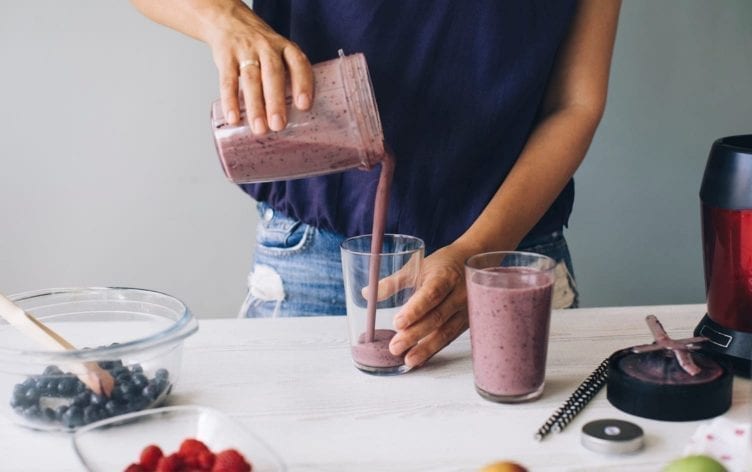
Most dietitians will tell you that, generally speaking, it’s easy to get enough protein from whole foods alone. But sometimes — if you’re struggling to meet your protein needs on a plant-based diet, trying to build more muscle or are crunched for time, protein drinks offer a handy solution.
With ever-more options popping up, it can be easy to wonder which drinks are actually healthy, though (hello, tub full of dessert-flavored protein powder).
“Since everyone’s calorie and protein needs vary based on weight, fitness goals, age, health and other factors, there is no one-drink-fits-all,” says Amanda A. Kostro Miller, RD, an advisory board member for Smart Healthy Living.
The next time you’re reaching for a protein drink, here’s what to look for:
1
A SHORT INGREDIENT LIST
“What we look for in protein drinks and powder is similar to what we look for when eating real food,” says Randy Evans, RD. That means short, easy-to-comprehend ingredients lists with more food names than chemical names, he explains.
While protein drinks are inherently more processed, try to choose ones with little to no additives, says Danielle Schaub, RD. In particular, watch out for food dyes (like yellow #5 and caramel color), artificial flavors, artificial sweeteners (like sucralose, acesulfame potassium and aspartame) and additives that might upset your GI tract (like carrageenan).
2
A HIGH-QUALITY PROTEIN SOURCE
In general, choose a protein drink with high-quality protein. Even whole food sources like eggs are processed to some extent for protein drinks. (So you might see ‘brown rice protein,’ for example, rather than ‘brown rice.’)
Key words like grass-fed, cold-processed, non-alkalized or non-denatured can signify the protein source is not as highly processed, Evans says. Whey protein, rich in branched-chain amino acids, key for muscle growth and recovery, is also a high-quality protein source and is easily absorbed by your body.
Ample Original and Teraswhey Grass Fed Organic Whey Protein both fit the bill, says Evans.
3
A VEGAN- OR VEGETARIAN-FRIENDLY PROTEIN (IF YOUR DIET CALLS FOR IT)
Soy, pea, hemp and brown rice protein are all technically considered complete sources of protein, as they contain all nine essential amino acids your body needs. However, because some are low on certain amino acids, you’re best off combining them for a more complete amino acid composition, per a recent review in Amino Acids. Look for drinks with hemp or brown rice plus soy or pea protein, or buy a combo of the two to cover your protein needs, like Garden of Life’s Sport Organic Plant-Based Protein Powder (for pea- and bean-based protein) and Nutiva Hemp Protein Powder.
4
AT LEAST 15 GRAMS OF PROTEIN
The higher the protein content, the more satiated you will feel, so aim for between 15–25 grams of protein. “You want a protein drink that has about this amount of protein since it’s the equivalent of what your body can generally process in one meal,” says Evans.
5
LESS THAN 10 GRAMS OF SUGAR
“While some sweetness is necessary to make a protein drink palatable, it shouldn’t be a sugar bomb with a dash of protein, either,” says Schaub. The American Heart Association (AHA) recommends no more than 24 grams of added sugar for women and 36 grams for men per day — and some protein drinks are already over that allowance. Look for sugar from natural sweeteners for easier digestion like monk fruit and honey.
6
A LOW SUGAR ALCOHOL CONTENT
If you’re prone to digestive issues, watch out for sugar alcohols, aka sweeteners your body can’t digest, which can upset your stomach, explains Evans. In particular, sorbitol and maltitol (which is how they’d be listed on the label) tend to be the most irritating, per a recent review.










